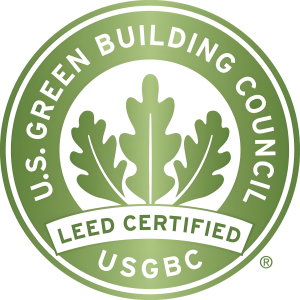LEED v4.1 credits advance circularity goals
USGBC’s vision for materials and resources in the built environment comprises three strategies: reduce embodied carbon; protect human and ecological health; and advance the circular economy. While we focused on how LEED v4.1 addresses embodied carbon in a May article, these strategies are interdependent and require continuous optimization of products and material. How does the newest version of the rating system advance the circular economy?
What is the circular economy?
A circular economy captures the benefits of materials throughout their life span and seeks to keep materials in circulation as long as possible. This can be achieved through long-lasting design, maintenance, repair, reuse, remanufacturing, refurbishing and closed recycling loops. A circular economy is the opposite of a linear economy—the standard “take, make, dispose” model of production—and it represents an unprecedented opportunity to reduce costs, embodied carbon and strain on natural resources and ecosystems.
Sustainable choices for the whole life cycle
The Materials and Resources (MR) credit category in LEED advances a circular economy with credits that reward project teams who minimize and optimize the use of buildings, building products and materials throughout the project life cycle, from construction and demolition waste management planning to product selection and ongoing sustainable purchasing.
With LEED v4, USGBC introduced concepts into the rating system such as whole-building life cycle assessment and material ingredient reporting and optimization, which required project teams to quantify and understand the impacts of material use on human and ecological health. These new concepts complemented longtime LEED criteria for construction waste management and responsible sourcing of materials. In the newest version of the rating system, LEED v4.1, MR credit requirements continue to advance a circular economy.
Link here: https://www.usgbc.org/articles/how-leed-v41-addresses-circular-economy



